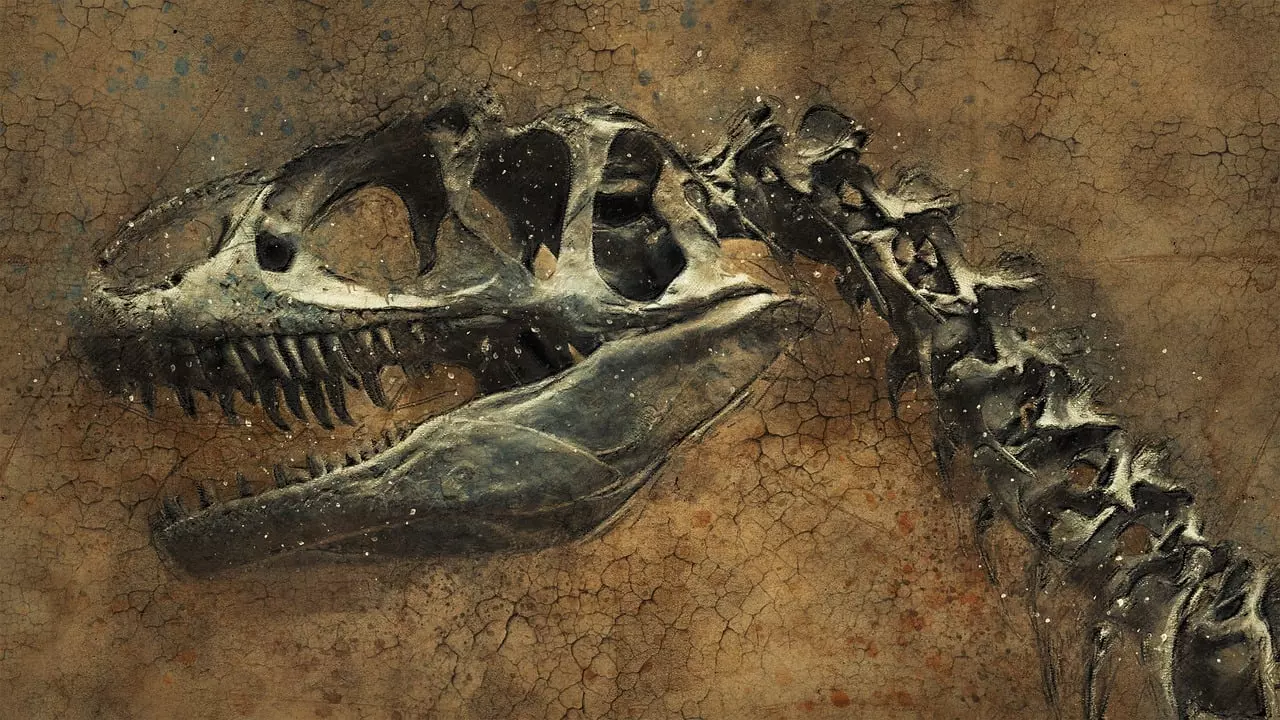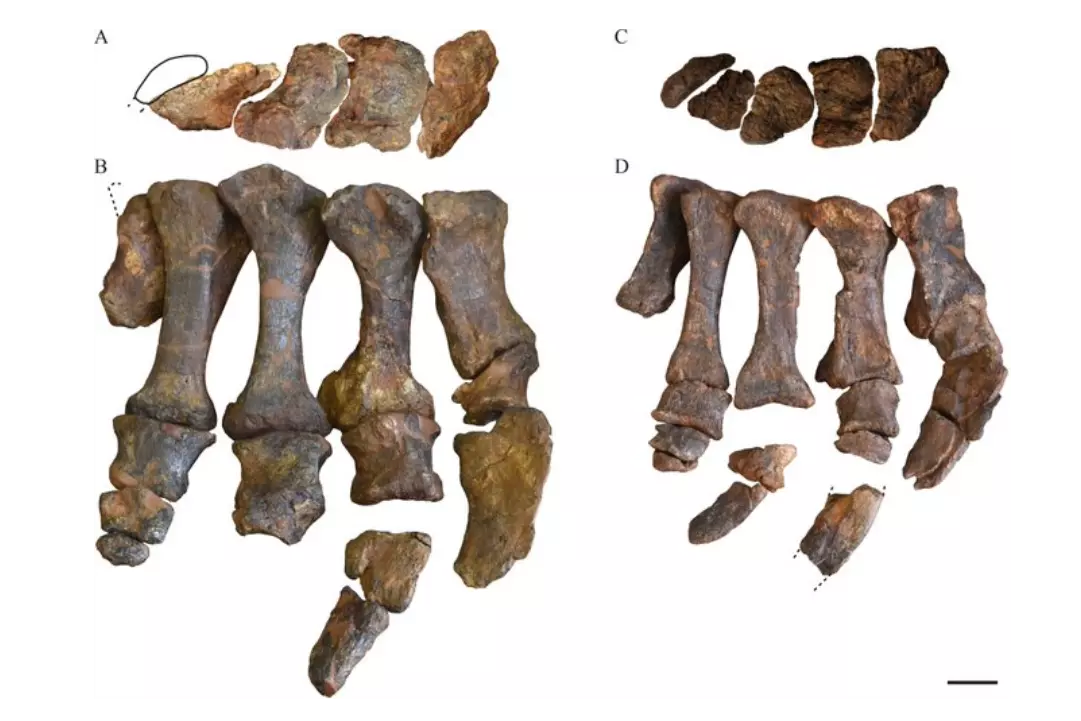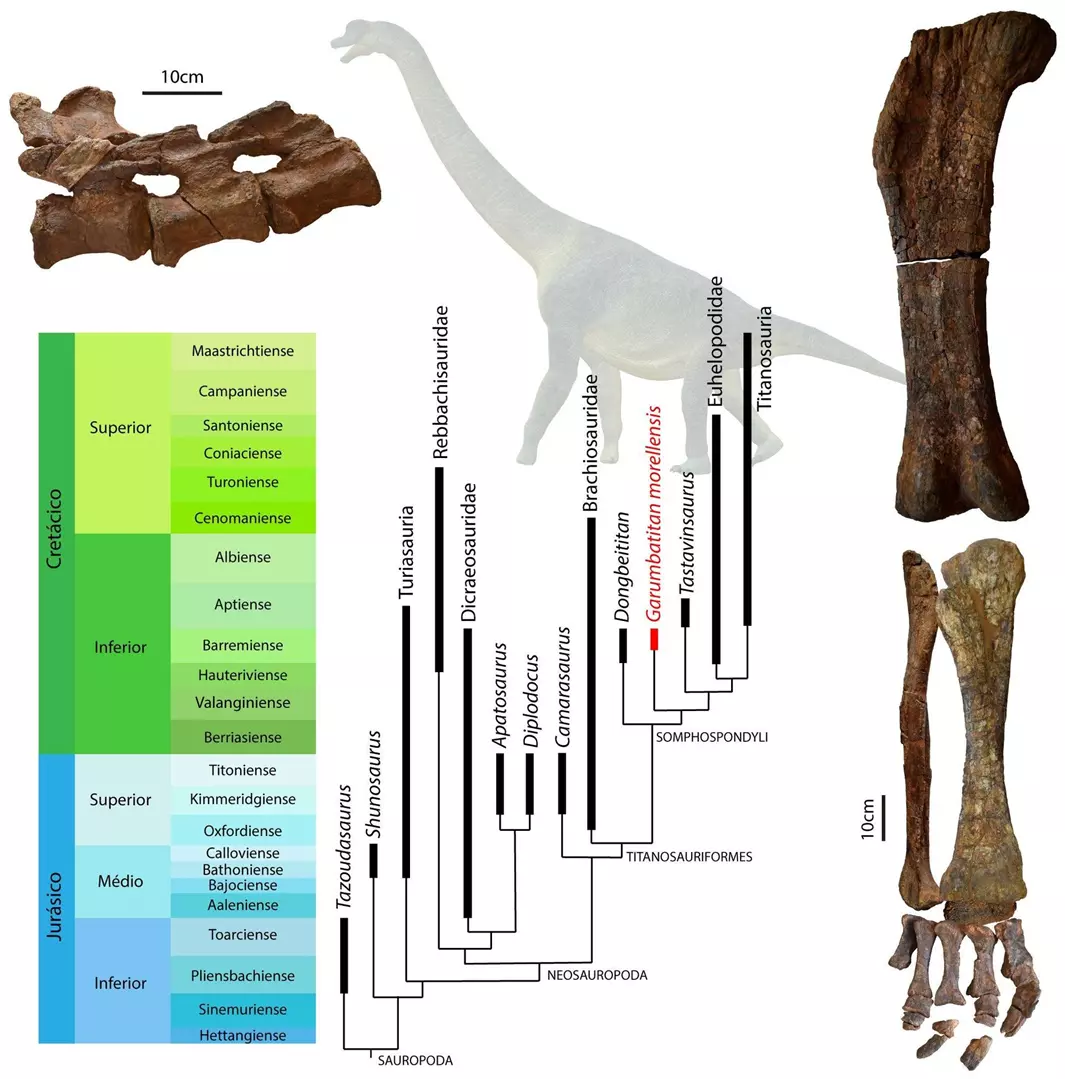
In an exciting breakthrough in paleontology, an international team of researchers has just shed light on the secrets of the massive sauropod dinosaur, unlocking valuable information about the evolution of these ancient giants.
This remarkable discovery takes us back in time to approximately 122 million years ago, when a unique specimen roamed the ancient landscape of what is now Spain. Nicknamed Garumbatitan morellensis, this newly identified species inhabited the Iberian Peninsula during the Early Cretaceous.
filming: @PD_Mocho

Because it’s an amazing discovery
The meticulous remains of this prehistoric giant were discovered during excavations at the archaeological excavation site of Sant Antoni de la Vespa, near Morella, between 2005 and 2008.
What makes this discovery truly remarkable is the presence of fossils from at least three specimens, all of which display impressive features such as massive vertebrae, long leg bones, and two almost complete sets of feet. This is a surprising rarity in the sauropod world.
Read more:
Pedro Mocho, study leader and paleontologist at the Dom Luiz Institute at the Faculty of Science at the University of Lisbon in Portugal, expressed his happiness with this discovery.
“One of the specimens we found is notable for its large size, with vertebrae more than a meter wide, and a femur that can be up to two meters long. We found two articulated, almost complete feet in this deposit, which is particularly rare in the geological record.”
This newly identified species, Garumbatitan morellensis, has become one of the most complete taxa from the Early Cretaceous of the Iberian Peninsula. It belongs to a subgroup of sauropods known as titanosaurs, which were the largest sauropod lineage and the only one to survive until the asteroid impact that wiped out the dinosaurs about 66 million years ago.
filming: @PD_Mocho
Revolutionizing our understanding
This study redefines our understanding of these ancient giants. With their distinctive features of long necks and tails, sauropods were herbivorous dinosaurs that reached enormous sizes. Garumbatitan morellensis now joins the repertoire of these fascinating creatures, providing invaluable clues about their anatomy, behavior and ecology.
As scientists continue to study these impressive fossils, we can expect exciting new discoveries about the evolutionary history of sauropods and their role in the ancient ecosystem of the Iberian Peninsula. The discovery of Garumbatitan morellensis is a vivid reminder that our planet was once home to truly amazing creatures, and their legacy continues to fascinate and inspire us.
Dear reader,
First, thank you for your honorable viewing of our site.
We have many writers, and mistakes can happen. If you notice something that needs our attention, let us know.
You can also be a contributor on our website and submit your own story or article, as long as it’s your own.
Please contact us through our channels:
WhatsApp +55 049 3644 1724
Email messages: journalafronticias@gmail.com; lucaveroneze@gmail.com;
Remember to include the link to the article and then describe the problem.

“Web geek. Wannabe thinker. Reader. Freelance travel evangelist. Pop culture aficionado. Certified music scholar.”







